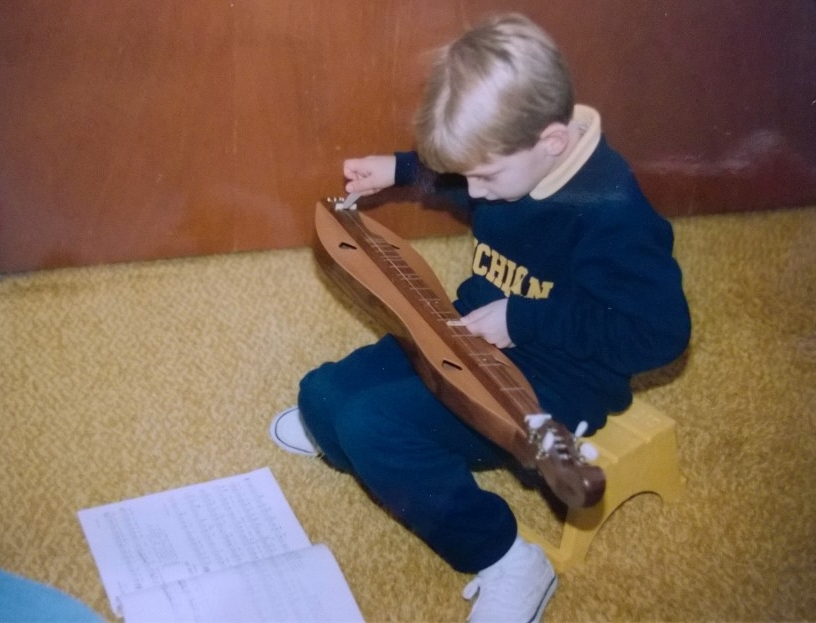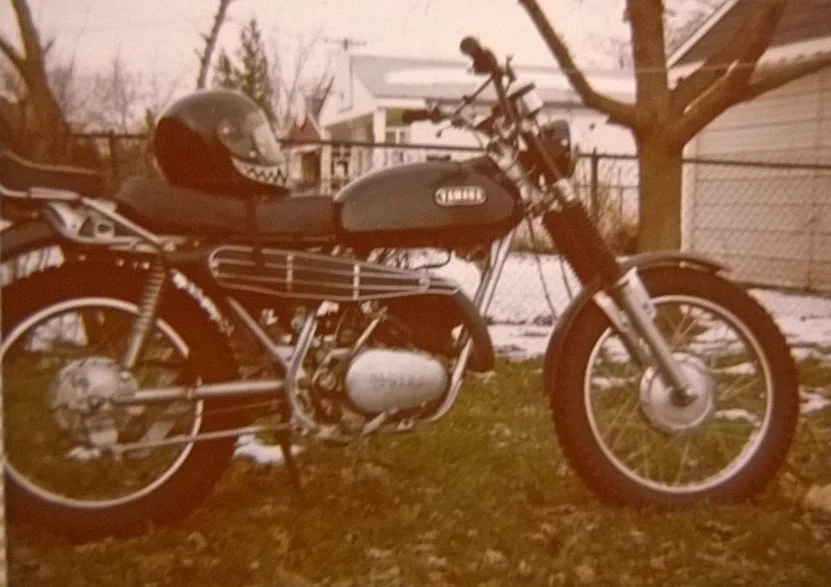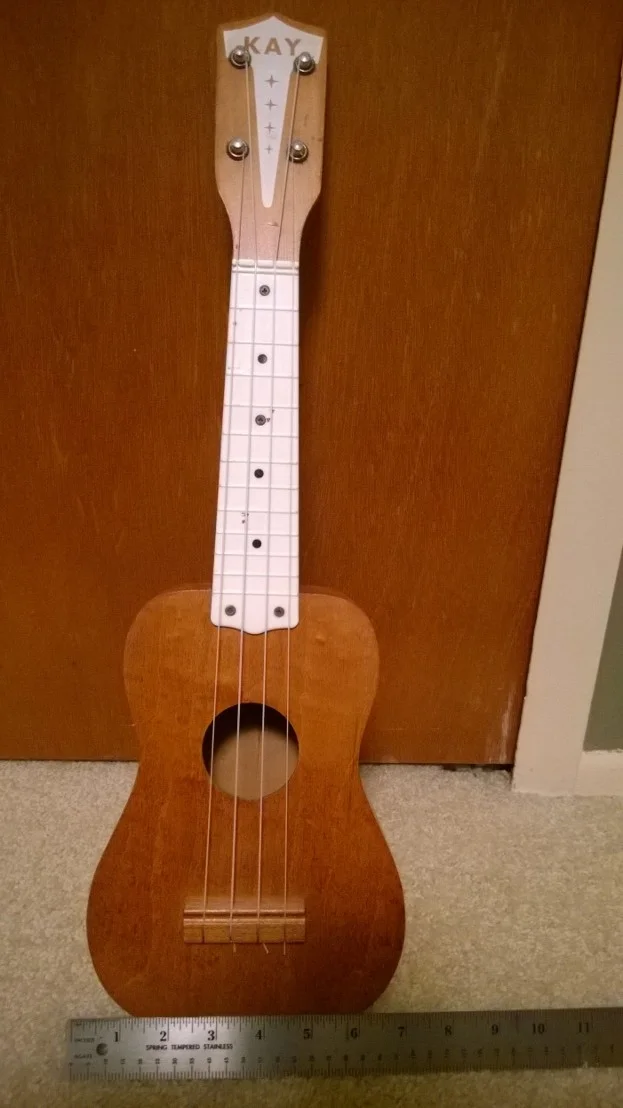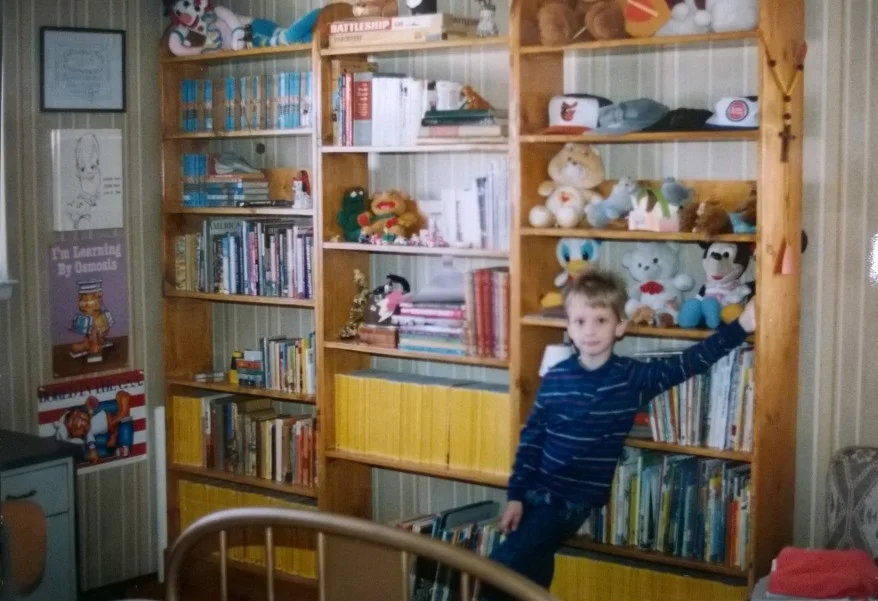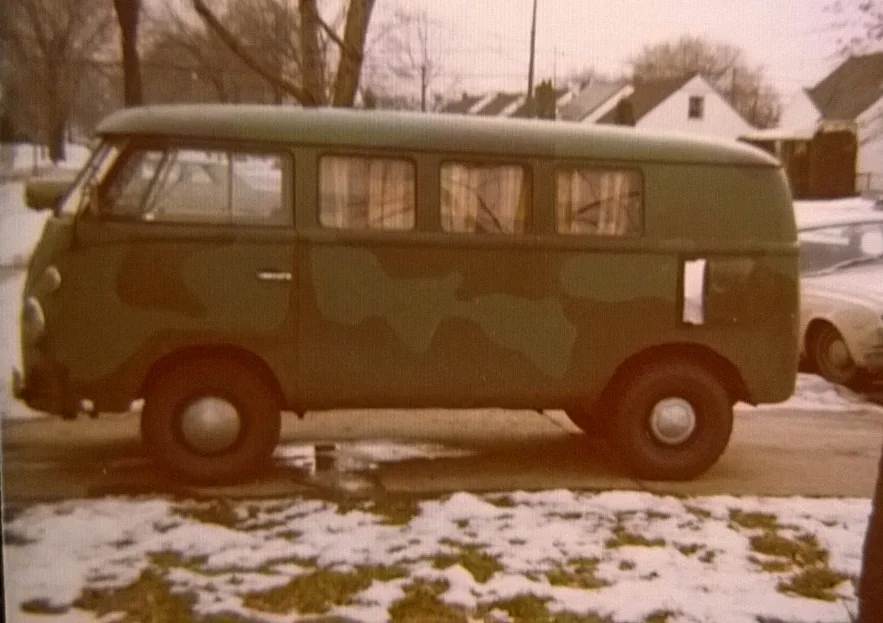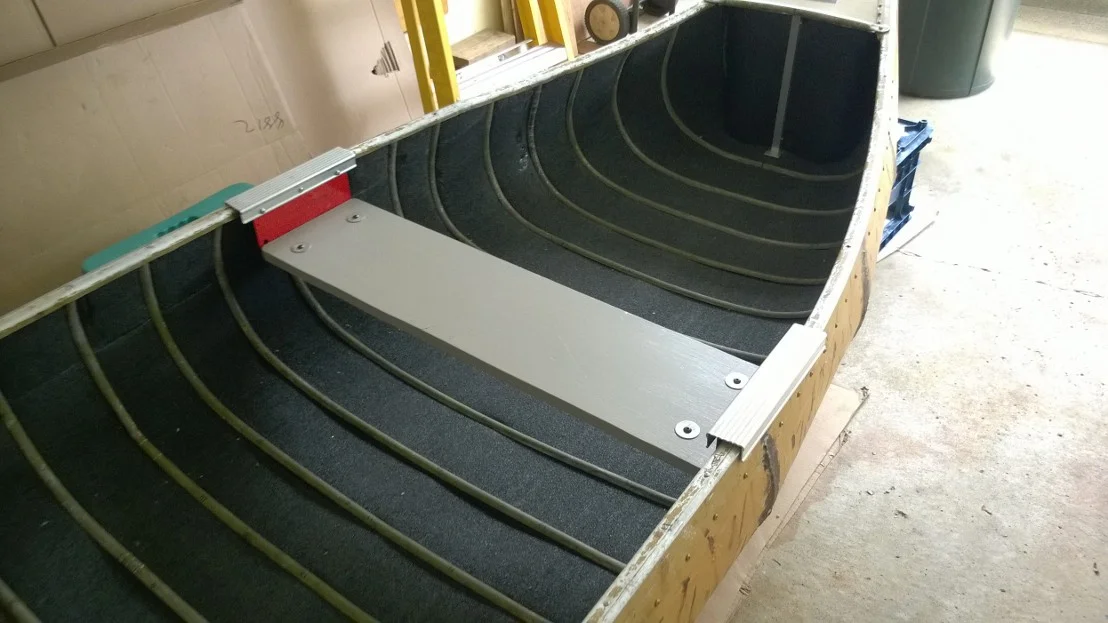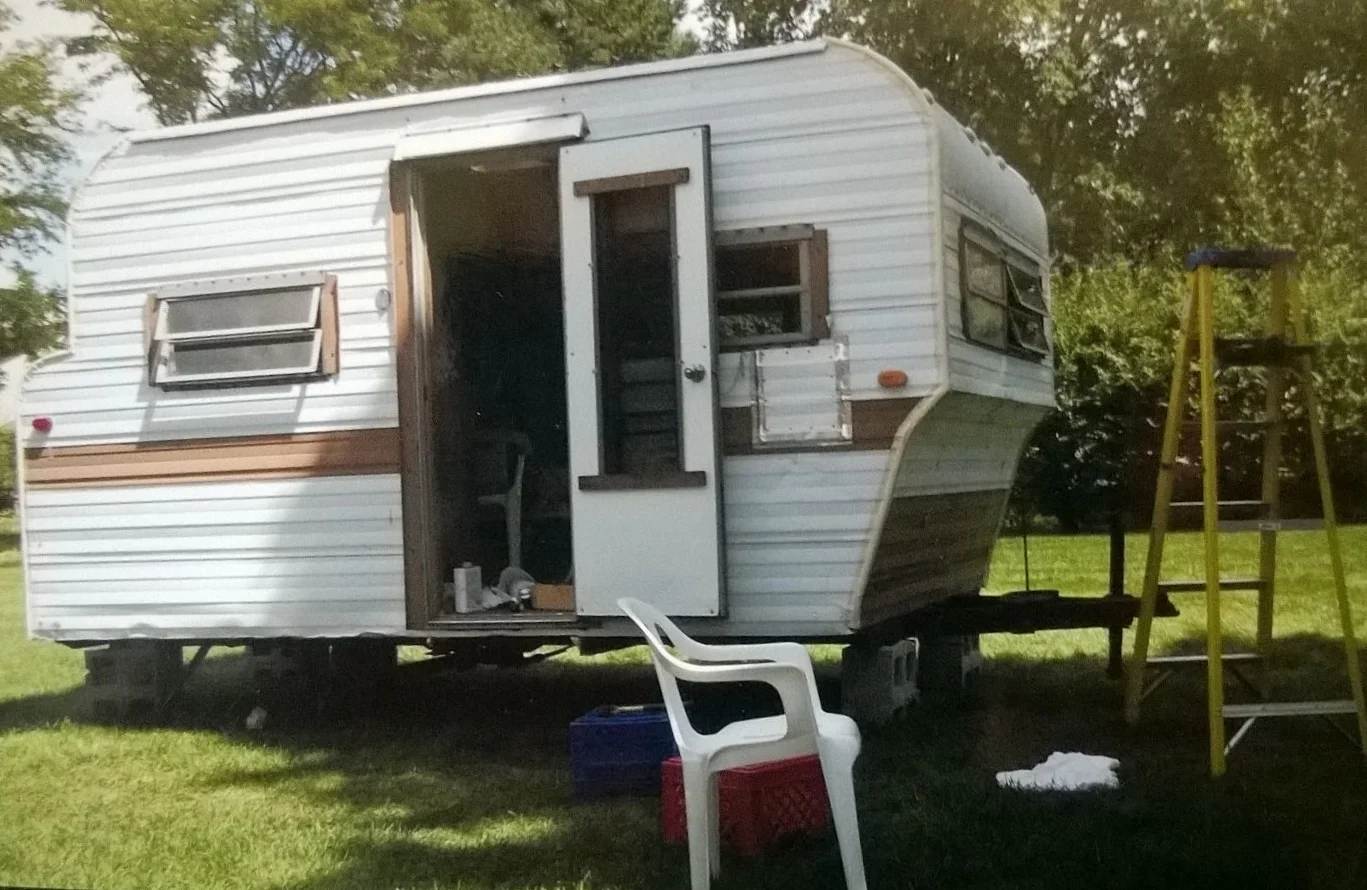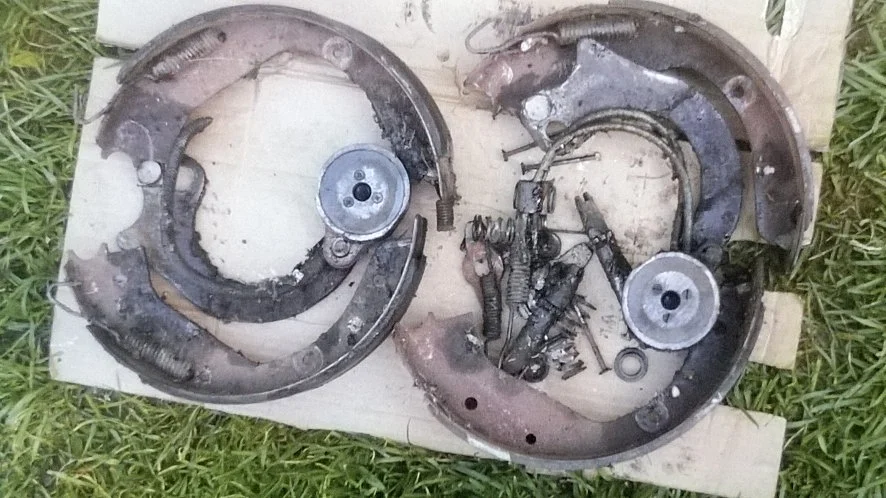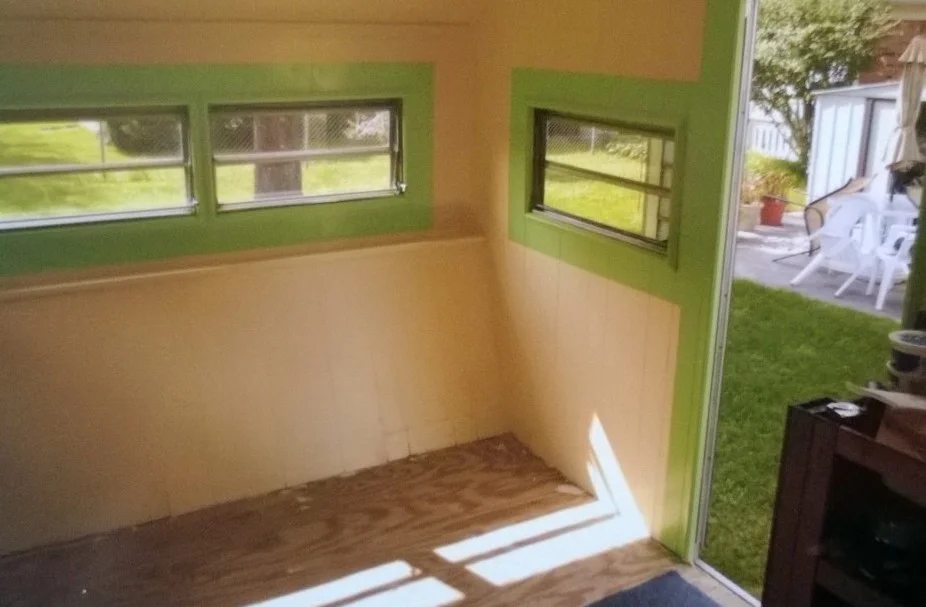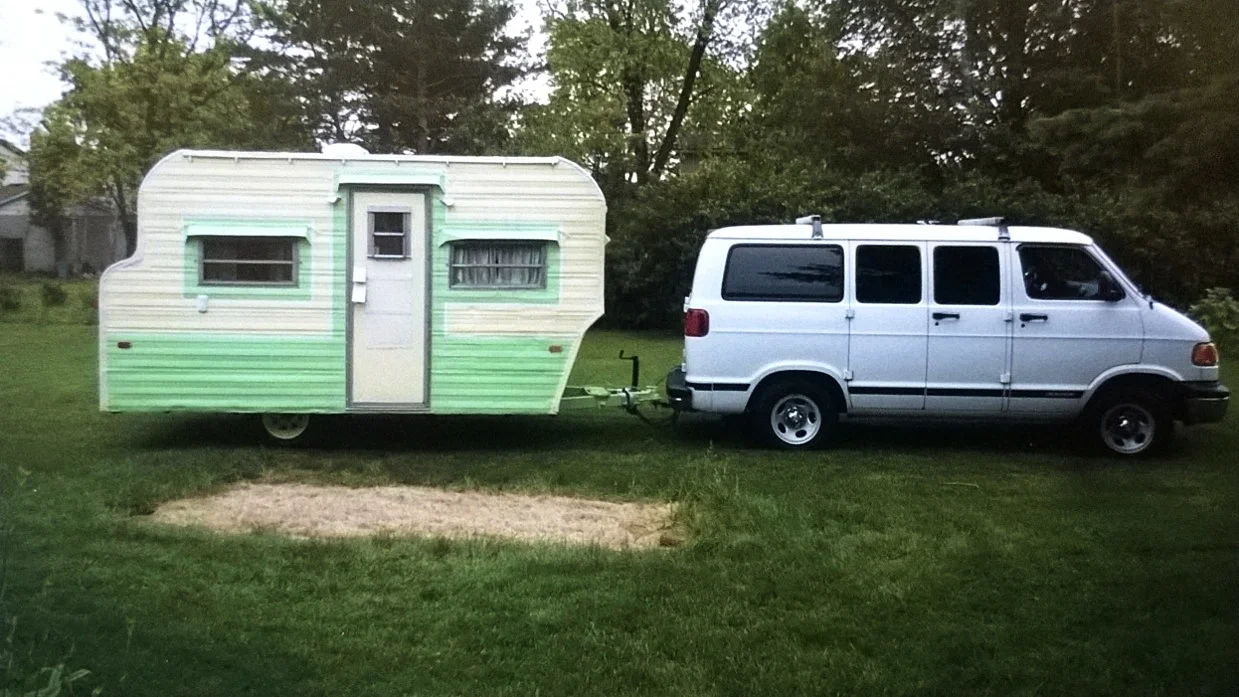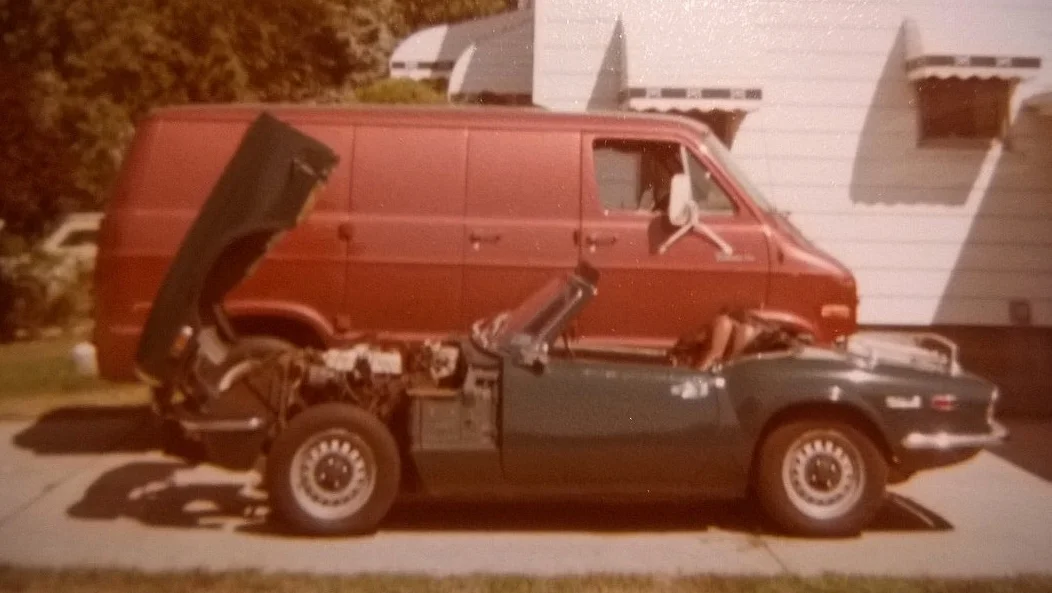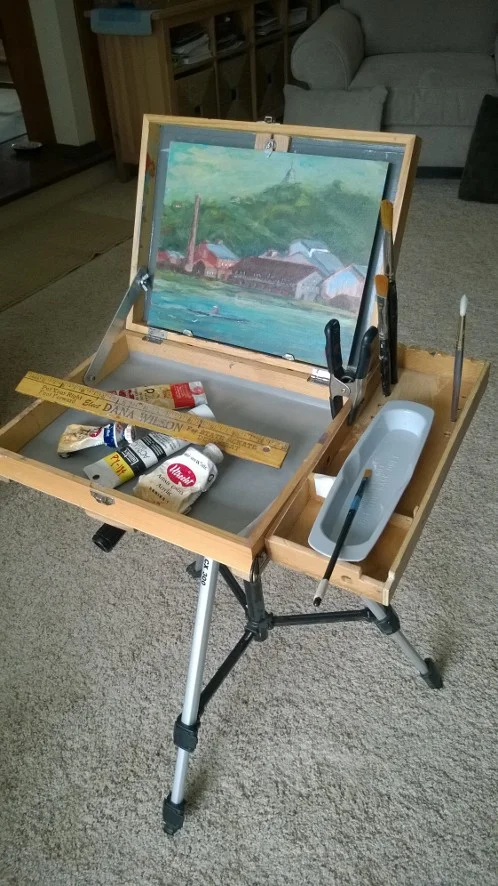August 2018
My summer project. First priority — Low Budget. Second priority— light weight and small. I bought a really beat up 1975 Sportspal 14 foot canoe for $40. The guy wanted $260. It had fiberglass patches, aluminum patches, “goop” patches. The bottom was all hoopty-doo and crooked. The foam liner inside was all rotted away. The aluminum ribs were bent in a lot of spots. Etc. etc. Look at the pics. He said it didn’t leak, I showed him at least 6 spots where it leaked like a sieve, he took $40 bucks. The worst, and unexpected part, was when I took the liner out and the fiberglass off, there was a huge 2 foot gash in the bottom. (see pic). It had been patched a long time ago and now had reopened. I could have fixed it, but considering all the other holes and problems on one end of it, I decided to cut it in half, or, more precisely one-third. So I did. It wasn’t that hard using a hack saw and tin snips.
Then I made a cardboard template for a transom. Then made one out of clear pine. Attached it with lots of stainless steel screws and Flex Seal, and double sided Externabond tape. (Which I had a lot of the tape left over from my old RV project a few years back). Then I folded part of the bottom and sides that I left long over the back of the transom. More screws and liquid Flex Seal from a can. It didn’t have a keel so I made an internal one out of 1/8 by 2 1/2 aluminum strip right down the middle of the inside, just to stiffen it up. Double sided Externabond tape to hold it to the hull, and then 4 inch wide white Externabond tape on top of that. A new liner costs $100 from the factory so I went to a local foam store and got the exact same stuff for $17. I cut the new liner using the old one for a template and installed the ribs. Some of them cracked in half so I splinted them with aluminum tubing underneath. (they are hollow hemispheres on the bottom side.) I used stainless steel lock wire to wrap them and hold them in place, then gooped them with clear epoxy.
Then I painted the bottom with house paint primer and put some flex seal goop on the worst part. Then I painted the birch bark color and pattern with acrylic artist paint, mixing up most of my tubes of various yellows with a bit of burnt sienna.
I put block foam, that I got in the UP of Michigan for free, in the bow to make it unsinkable. I did not install the usual sponsons on the sides of the Sportspal. I painted the name on the transom “2/3” and its subname “CA-RO-KA”, canoe, rowboat, kayak.
I also made an easily removable set of wheels to clip to the transom so that I could move it even easier than carrying it. I used part of an old RV ladder and some wheels off an old lawnmower. I would have to flip it over so the bottom is up to use those, so I also made another set of wheels from the small dolly in our garage we use for moving the trashcans out. That set of wheels attaches simply to the bottom of the boat so that I can move it right side up. Without altering the dolly.
Then I will store it in the garage from the ceiling. So rather than lifting it to a bracket or whatever I am making a pulley system with the block and tackle from my Grandpa’s barn in Elo Michigan. I will be able to set it on the floor, put straps around the bottom, and hoist it up with tackle that gives me 3 times mechanical advantage ( 2 pulleys, one with 2 rollers and one with one roller). So the 47 pounds will hoist up feeling like it’s only a 16 pounds canoe. Boom !!! —- the physics of simple machines!
I’ll probably paddle it with a kayak paddle, but will also make oarlocks and make my kayak paddle into quick change oars. My total cost for this project, using a lot of stuff and junk metal I already had, was about $160. Probably about 60 hours of work, lots of creativity and problem solving, which makes the project exciting to me, with all the large and small leaks and other problems.
Total length 8’ 10” Width 37 “ Weight @ 47 pounds.
I’ll put pics of its maiden voyage on this site when that happens. Soon I hope!
8-26-18 Had it out on Walters Lake in Clarkston, (The big machines around me are lake weed whacking machines). It doesn’t leak! It floats well. I paddled it with a kayak paddle, changed the paddle into a canoe paddle, and changed that into a set of oars, with some temporary oar locks I made. (You can see them in the pic of me in the boat). It rows great. But paddling it was a different story. It has a tendency to swing back and forth because it doesn’t have a keel.
When I got it home I made a removable, kick-up, skeg that attaches over the transom. It’s like a rudder that doesn’t move sideways. That should make it track straight.
Also I didn’t have a seat in it and realized I need one right where the crossbar is. I removed the crossbar and built a seat that can slide backward or forward on the gunnels, and is also removable.
Seat and skeg made from metal and junk I had lying around. Zero cost.
Hopefully I’ll get out to test my seat and skeg before winter sets in!
Tested the skeg and slidable seat!! Perfect! See pics…
